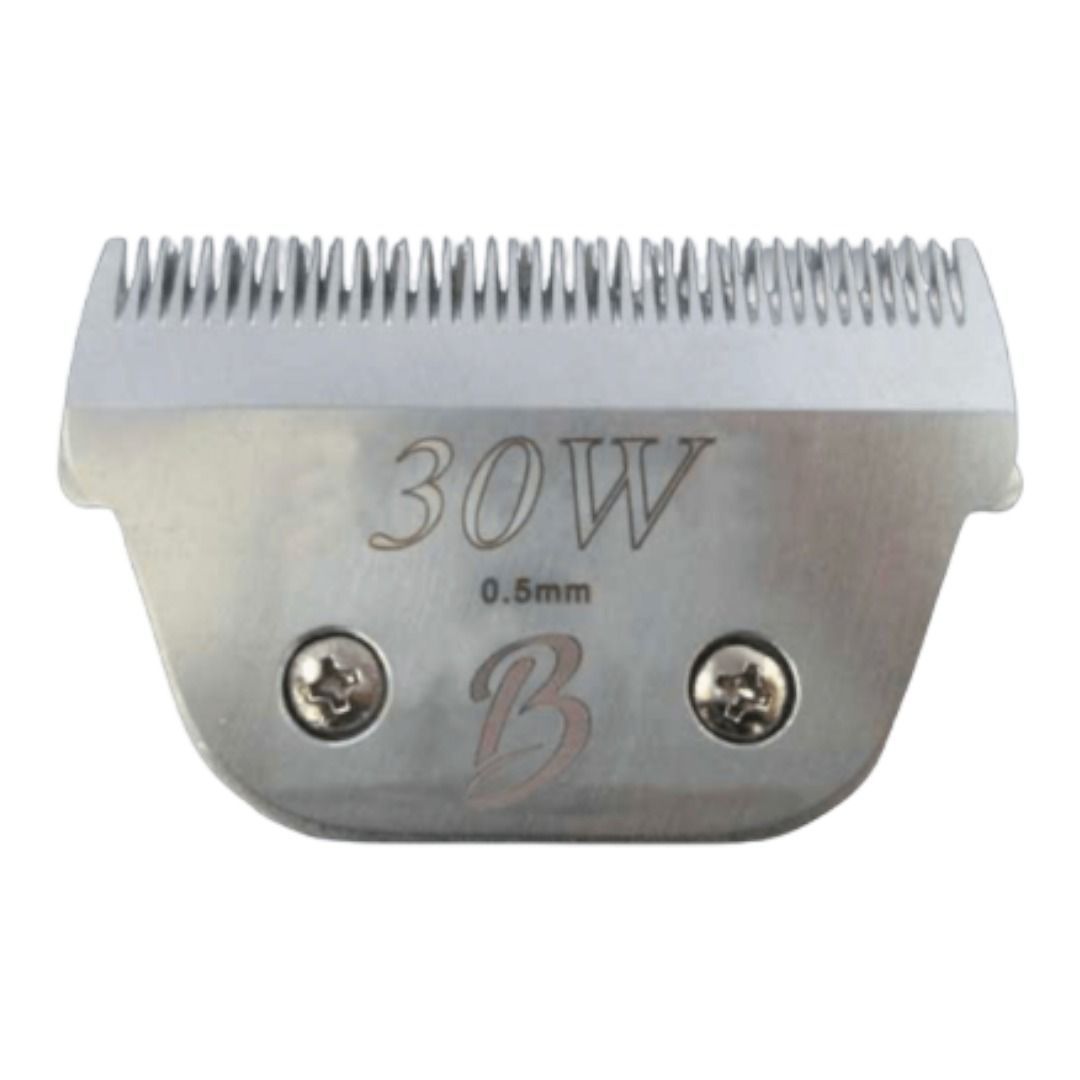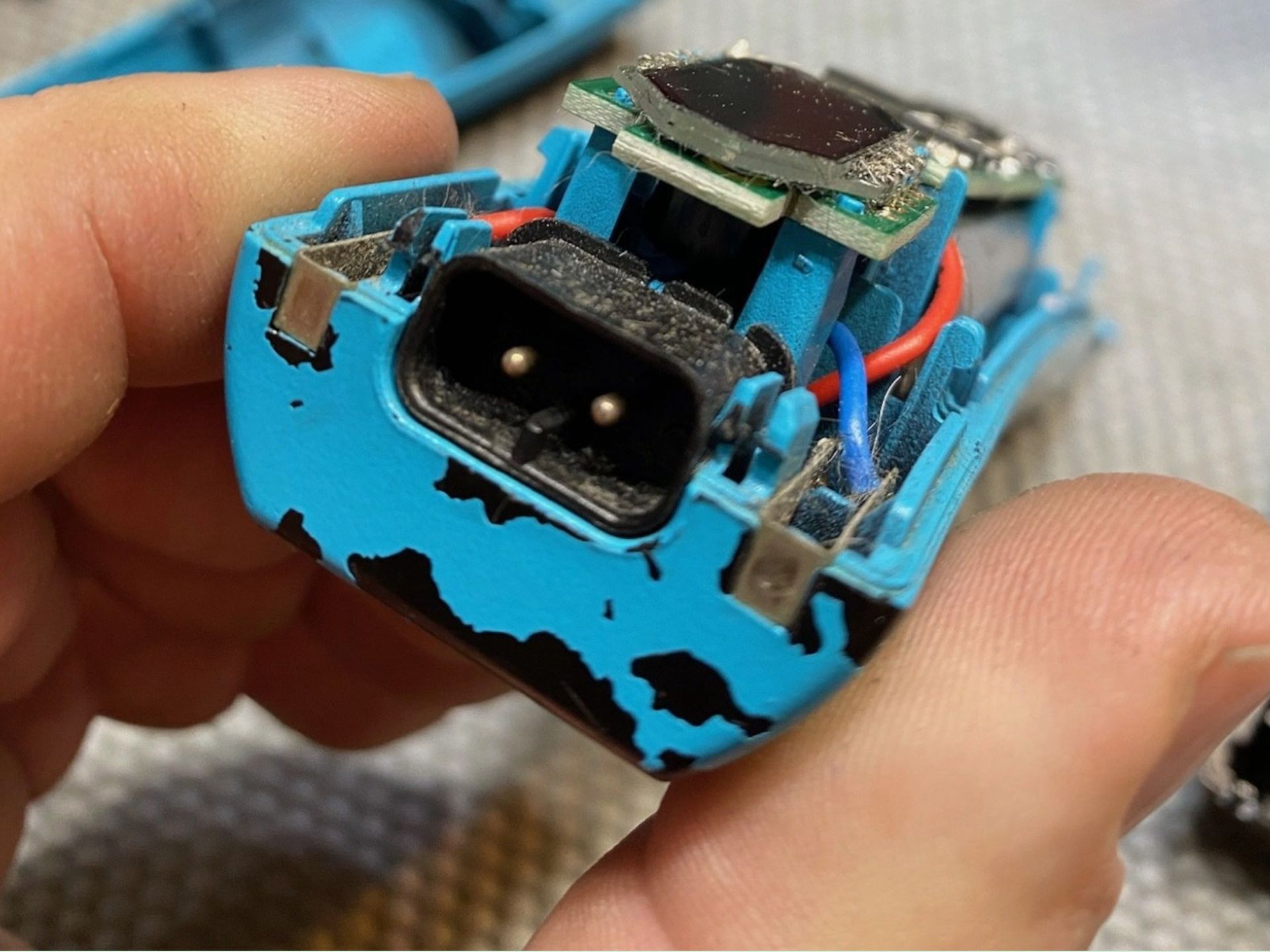Reasons Your Clipper Blades Aren't Cutting Properly
There are a few possible reasons why your clipper blades might not be cutting properly. In this article, we will discuss some of the most common causes and how to fix them.
Keep in mind that if you are having trouble grooming your clipper blades, it is always best to consult with a professional sharpener. They will be able to help diagnose the problem and make any necessary repairs or adjustments.
The most common reason that your clipper blades aren't cutting properly is that the blades are dull.

5 reasons why your clipper blades aren't cutting properly
Common reasons for clipper blades moving but not cutting
There are several common reasons why clipper blades may move without cutting effectively.
Understanding these causes can help you troubleshoot and resolve the issue quickly.
Here are some possible explanations:
- Dull Blades: Over time, clipper blades can become dull due to regular use or lack of maintenance. Dull blades will struggle to cut through hair smoothly, leading to the blades moving but not cutting properly.
- Lack of Lubrication: Proper lubrication is essential for smooth blade movement and efficient cutting performance. If your clipper blades are not adequately lubricated, they may drag or pull on the hair instead of cleanly cutting it.
- Hair Build-up: Hair clippings can accumulate between the teeth of the clipper blades over time, causing them to clog and hinder proper cutting action. Regular cleaning and removal of hair build-up is crucial for optimal performance.
- Misaligned Blades: Improperly aligned clipper blades can result in uneven cuts or no cuts at all when in use. Check if your blade alignment is correct and make necessary adjustments if needed.
- Worn-out Springs:
The springs inside the clippers that control blade tension can wear out over time, affecting their ability to cut effectively even when the motor is running correctly.
- Motor Issues:
In some cases, problems with the motor itself could be causing the issue rather than a problem with the actual blades or components mentioned above. A faulty motor may fail to generate enough power for effective cutting action.
By identifying which of these factors might be contributing to your clipper's inability to cut properly, you'll be better equipped to address and rectify any issues promptly.
Blade Alignment Issues
If your clipper blades are moving but not cutting, it could be due to blade alignment issues. Here are some common problems and solutions:
Misalignment: Sometimes, the top blade and bottom blade can become misaligned during use or maintenance. This can result in poor cutting performance.
- Solution: Check if the blades are properly aligned by visually inspecting them. If they appear misaligned, you'll need to adjust them accordingly. Refer to the manufacturer's instructions for your specific clipper model on how to align the blades correctly.
Loose Screws: Loose screws can cause the blades to move inconsistently, leading to ineffective cutting.
- Solution: Tighten any loose screws that hold the blades in place using a screwdriver or Allen key (depending on your clipper model). Make sure all screws are securely fastened before using the clippers again.
Worn Blades: Over time, clipper blades can become dull or worn out, resulting in reduced cutting performance.
- Solution: Replace old or worn-out blades with new ones of suitable quality for optimal cutting results. Follow the manufacturer's recommendations for replacing and maintaining your clipper's blades.
Dirty Blades: Accumulated dirt, hair debris, or lubricant buildup on the blade surfaces can impede their ability to cut effectively.
- Solution: Regularly clean your clipper blades after each use by removing any hair debris or residue with a brush specifically designed for this purpose. You may also consider applying a recommended cleaning solution provided by the manufacturer.
Improper Lubrication: Lack of proper lubrication between the moving parts of clippers might lead to insufficient functionality
- Solution: Ensure that you apply an appropriate amount of lubricating oil regularly as per manufacturers' guidelines
Dull Blade Problems
When clipper blades are moving but not cutting effectively, it could be due to the blades being dull. Here are some common issues that arise with dull blades:
- Lack of Sharpness: Over time, clipper blades can become blunt and lose their sharpness. This can result in a reduced ability to cut hair efficiently.
- Uneven Cutting: Dull blades tend to create uneven cuts as they struggle to glide smoothly through the hair. You may notice patches or missed spots on the trimmed area.
- Pulling or Tugging Sensation: If you feel a pulling or tugging sensation while using clippers, it is often an indication of dull blades. The lack of sharpness causes the blade edges to grab and pull at the hair instead of making clean cuts.
- Increased Clippers Noise: Dull blades also produce more noise than usual during operation. If your clippers seem louder than before, it's likely because the dulled edges are struggling to cut through hair strands properly.
To address these problems caused by dull clipper blades, consider taking the following steps:
- Sharpen Blades Regularly: Sharpening your clipper blades regularly helps maintain their performance and extends their lifespan. Consult your manufacturer's guidelines for recommended sharpening methods specific to your brand and model.
- Replace Blades When Necessary: If sharpening no longer restores proper cutting performance, it may be time to replace your clipper blades altogether.
- Clean Blades Thoroughly: Proper cleaning after each use removes any debris or buildup that could affect blade performance over time. Refer to our previous section on "Clipper Maintenance" for detailed instructions on how best to clean your clipper blades.
By addressing dull blade problems promptly and maintaining good blade care practices, you can ensure efficient cutting performance from your clippers and achieve desirable results consistently.
Dirty or Clogged Blades
When clipper blades are not cutting properly, one common cause is dirty or clogged blades. Over time, hair and debris can accumulate on the blades, preventing them from performing at their best. Here are some possible reasons why your clipper blades may be dirty or clogged:
- Build-up of Hair: During grooming sessions, hair can accumulate between the teeth of the blade. This build-up prevents the blades from making clean cuts.
- Dullness: If you have been using your clippers for a while without proper maintenance, the edges of the blade may become dull and less effective at cutting through hair.
- Oil Residue: Improper cleaning after oiling your clippers can lead to an accumulation of oily residue on the blades over time. This residue attracts dirt and hair particles, causing blockages that hinder smooth cutting action.
Lack of Lubrication
When clipper blades are moving but not cutting, one possible cause could be a lack of lubrication. Proper lubrication is essential for the smooth operation and longevity of your clipper blades.
Here are some key points to understand about the importance of lubricating your blades:
- Reduced Friction: Lubricating your clipper blades helps reduce friction between the moving parts, allowing them to glide smoothly against each other. Without proper lubrication, the increased friction can cause the blades to seize up or move sluggishly.
- Heat Generation: As the clipper blades move back and forth at high speeds, heat is generated due to friction. Insufficient lubrication exacerbates this problem by causing excessive heat buildup, which can lead to blade dullness or even damage.
- Prevents Rust and Corrosion: Blades that lack sufficient lubrication are more susceptible to rust and corrosion over time. Moisture from hair clippings or cleaning solutions can promote oxidation if not properly protected.
To ensure adequate lubrication for your clipper blades, follow these tips:
- Use Clipper Oil: Apply a few drops of specially formulated clipper oil directly onto the blade edges while they're running or after cleaning them thoroughly.
- Avoid Over-lubricating: While it's important to provide enough oil for proper functioning, excess oil may attract more dirt and debris into your clippers' mechanism.
- Regular Maintenance Schedule: Set a routine maintenance schedule that includes regular blade cleaning and oiling sessions based on frequency of use.
Remember that different types of clippers may have specific requirements regarding oils or greases recommended by their manufacturers. Always consult the product manual or manufacturer's guidelines for best results.
By ensuring proper lubrication as part of your regular maintenance routine, you can help prevent issues with cut quality caused by inadequate movement in your clipper blades.
Power Supply Problems
If your clipper blades are moving but not cutting, one possible reason could be power supply problems. Here are some common power-related issues that you may encounter:
- Low Battery:
If the battery of your cordless clipper is low, it may not provide enough power to drive the blades effectively. Make sure to charge or replace the battery as needed.
- Loose Connection: Check if there is a loose connection between the clipper and its power source. Ensure that all cables and connectors are securely plugged in.
- Faulty Power Outlet:
Sometimes, an issue with the power outlet can prevent proper electricity flow to your clippers. Try plugging them into a different outlet or use a voltage tester to check for any irregularities.
- Power Surge: A sudden surge in electrical current can damage sensitive components inside your clippers and affect their performance. Consider using surge protectors or unplugging during thunderstorms or electrical disruptions.
- Inadequate Voltage/Wattage:
Clippers have specific voltage/wattage requirements for optimal operation. Using an incompatible power source (either too high or too low) may cause blade movement without effective cutting action.
- Overheating Protection: Some clippers have built-in safety features that automatically shut off when they overheat to prevent damage and ensure user safety. Allow time for cooling down if this happens before resuming use.
- Motor Malfunction: In rare cases, internal motor malfunctions can lead to blade movement without successful cutting results. This issue typically requires professional repair or replacement of faulty parts.

Clipper Repair Services
If you're having trouble with your clipper blades and they're not cutting properly, head to our Clipper Repair Service page and fill out the form and we'll be more than happy to help you get back to what you do best in no time.

Jessie Jaggers
Growing up in a family-run grooming business, Jessie Jaggers saw firsthand the need for reliable tool sharpening.
In 2017, he launched Sharp Edges, emphasizing quality tools and top-tier materials.
With a commitment to fast delivery and top-notch service, Jessie ensures that every Sharp Edges product meets the highest standards, reflecting his passion for excellence in the grooming industry.
With Jessie at the helm, customers can trust in the expertise and dedication of Sharp Edges.

